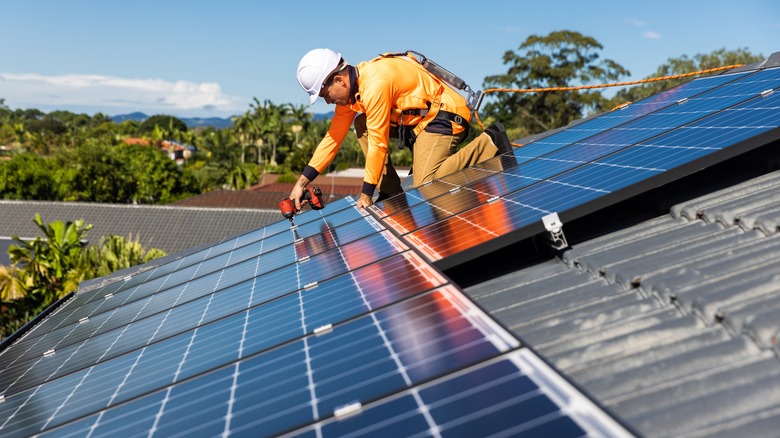
zstock/Shutterstock
Solar is the most popular form of renewable energy worldwide, accounting for a reported three-quarters of all new renewable capacity in 2023. While much of that capacity comes from large-scale solar farms, an increasing number of homeowners are opting to install solar panels to cut down their electricity bill or, in some cases, become entirely self-sufficient. That rise in popularity is expected to continue over the next few years, especially given the recent instability in global fossil fuel markets.
Harnessing solar might be becoming a more appealing option for many homeowners, but there are still some key considerations to make before installing a photovoltaic (PV) system. Chief among them is the type of solar panel to choose for your home, but other considerations include accounting for extreme weather and deciding whether to install storage. To help you decide which options are best for your home setup, this guide covers all the key choices you’ll need to make.
Solar panel basics and rooftop potential
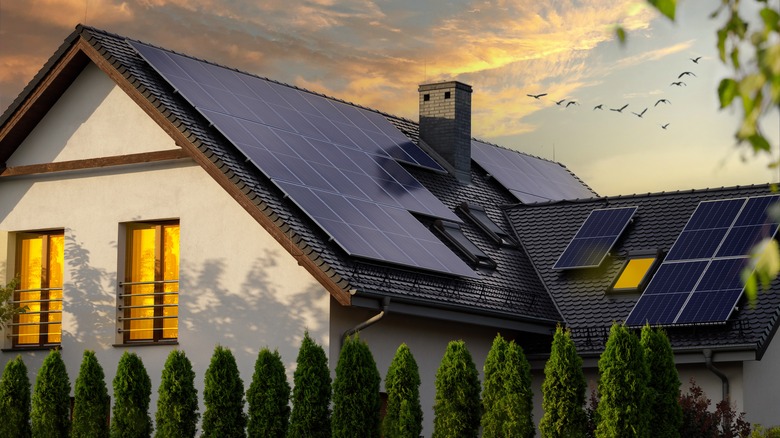
MAXSHOT.PL/Shutterstock
Before getting into the different types of panels, it’s useful to recap exactly how solar photovoltaic systems work. Each panel is, in essence, a way to capture the sun’s radiation and convert it into electricity. The rate at which it does so varies according to several factors, with the most well-known one being the amount of sunlight each panel receives per day. As a general rule of thumb, sunnier locations will result in more electricity generation, but recent advances in solar panel technology have improved certain panels’ efficiency rates in areas with less sunlight.
Most homeowners choose to install solar panels on their rooftop, so before installing any solar panel system, it’s important to consider your home’s rooftop potential. The size, design, and orientation of the roof will significantly impact what panel array can be installed. There are various online tools available to help measure your rooftop’s potential, including Google’s Project Sunroof, and they’re a good way to get an initial idea of both the expected cost of installation and the amount of electricity bill savings you can expect.
Thin-film solar panels: Pros and cons
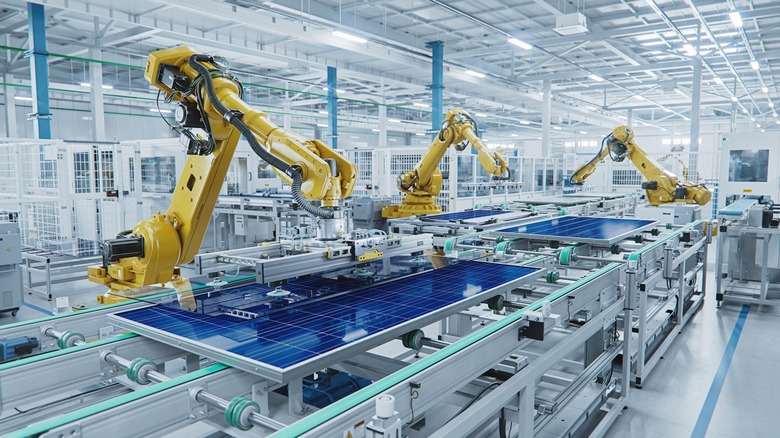
IM Imagery/Shutterstock
Once you’ve established that your rooftop is suitable for installing solar, it’s time to decide what type of panels to use. There are three main categories, each with various advantages and disadvantages, but we’re starting with the one that’s least common for home installation. According to estimates by the U.S. Department of Energy, CdTe (cadmium telluride) thin-film solar panels represent only about 5% of global photovoltaic panel manufacturing.
The main advantage of using CdTe panels is that they’re the cheapest and least polluting to manufacture. It’s estimated that it only takes around three years for a thin-film system to offset its manufacturing emissions, compared to nearly four years for other popular types of panels. However, there are also some notable downsides to thin-film panels, with the main downside being their inefficiency compared to other panels. They’re also more fragile, and so require more protection for outdoor use. For these reasons, they’re not generally recommended for home solar installations.
Polycrystalline solar panels: Pros and cons
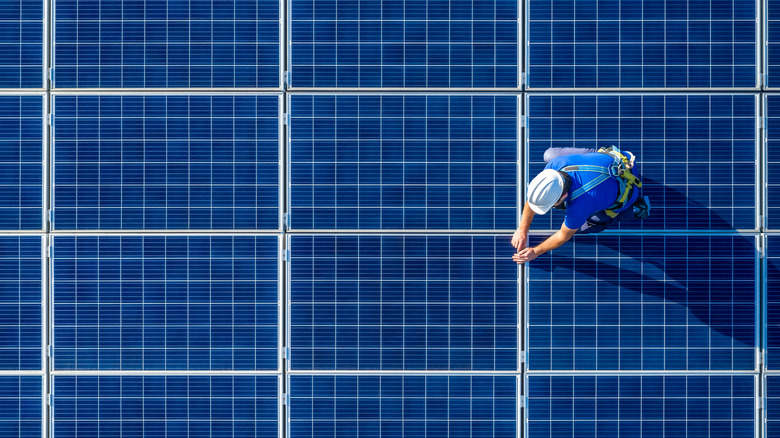
Eloi_omella/Getty Images
Crystalline panels make up the vast majority of the solar panel market, and are widely considered the best option for home solar installation. There are two main types of crystalline panel: monocrystalline and polycrystalline (sometimes called multicrystalline). Both are made from silicon crystals. Polycrystalline panels are the more affordable option of the two, primarily because they’re simpler to manufacture. Each cell within a panel is made up of multiple silicon crystals which are melted together, creating wafers that result in a distinctive blue hue to the finished product.
Polycrystalline panels might be cheaper, but they’re also less efficient than monocrystalline panels. The exact difference in efficiency will vary between manufacturers, but most will be several percentage points less efficient than their monocrystalline counterparts. As a result, more panels will be needed to generate the same amount of energy. Polycrystalline panels are also more easily affected by changes in temperature, with their efficiency decreasing in high temperatures.
Monocrystalline solar panels: Pros and cons
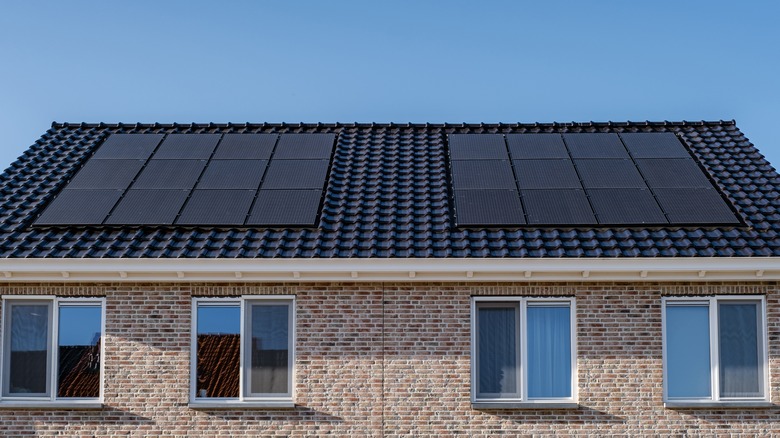
fokke baarssen/Shutterstock
Monocrystalline panels are the most efficient solar technology on the market and the most resistant to temperature changes. However, this all comes at the expense of a significantly higher initial cost. Manufacturing a monocrystalline cell is more complex, as it requires a single silicon crystal to be produced. A variety of manufacturing methods are used, but all add an extra degree of complexity compared to polycrystalline cell production. Monocrystalline panels can be distinguished from polycrystalline panels as they’re much darker, in color, usually appearing black.
Alongside the initial setup costs, it’s also worth factoring in the potential cost of replacing a damaged solar panel. As it stands, a monocrystalline panel will cost more to replace, although it’s worth noting that future developments in manufacturing technology may narrow the price gap between the two. Both types of panel are designed to last at least 25 years, with neither considered to be longer lasting than the other.
PERC solar panels: Pros and cons
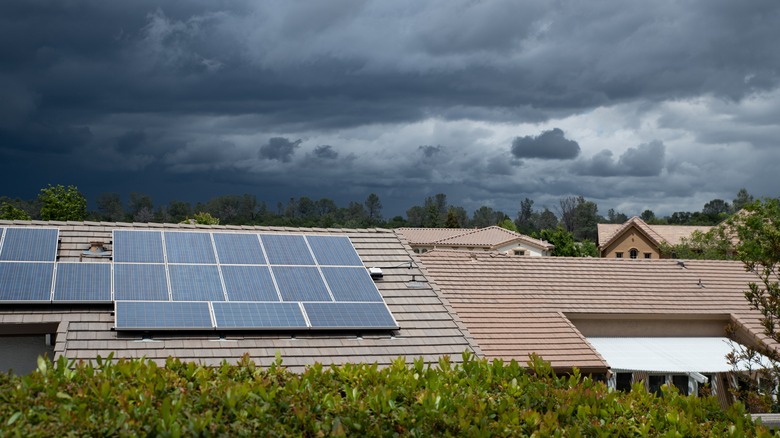
Chris Allan/Shutterstock
Passivated Emitter and Rear Cells (or PERC cells for short) are fairly recent additions to the market, but offer improved efficiency for buyers looking for the most capable panels. They’re a type of crystalline panel with a back surface passivation layer that performs several functions. The layer not only reduces the buildup of heat within the panel but also reflects light that has passed through it, bouncing it back through the crystal. This increases the rate of absorption, in turn making the panel more efficient.
PERC cells can be made in both monocrystalline and polycrystalline form, but monocrystalline PERC cells are the preferred option for most buyers. They’re already the more efficient and expensive option, with PERC cells adding even more efficiency but for only a marginally higher cost. PERC cells have also proved to be particularly effective in areas with less direct sunlight and may be especially worth the investment for buyers living in gloomier areas.
How does the weather affect solar panels?
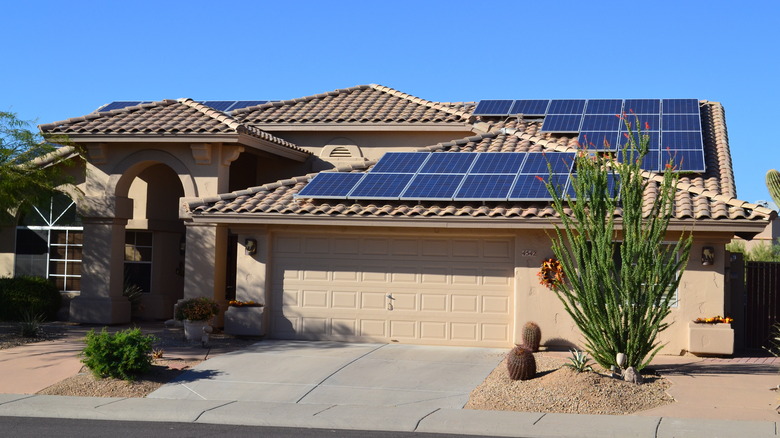
Jessica Kirsh/Shutterstock
While differing levels of sunlight exposure can make a big difference to the effectiveness of solar panels, it’s far from the only weather phenomenon to be aware of when evaluating a solar installation. As mentioned above, outside temperature can make a significant difference to the amount of electricity a panel will generate, with monocrystalline panels the preferred option for hotter climates.
In wetter, colder areas, hail resistance and freeze resistance are also worth considering. Panels meeting the IEC 61215 standard should provide ample resistance against both risks, but it’s always worth checking with your installer if certain panels they stock are particularly hardy. Depending on your location, salt mist, ammonia exposure, and blowing sand can also be risk factors. Each can be mitigated by choosing a panel that meets the relevant resistance standard. Again, a reputable installer will be able to provide more tailored information.
Another risk factor that’s slightly less straightforward to mitigate is storm and hurricane damage. In particular, Louisiana and Florida have been highlighted by researchers as areas where solar panels can be especially effective but also have the most potential for storm damage. While there’s little anyone can do to mitigate the most severe storm damage, any location’s risk of storm-induced cell damage should be considered when deciding whether installing solar is a worthwhile investment.
What is solar plus storage?
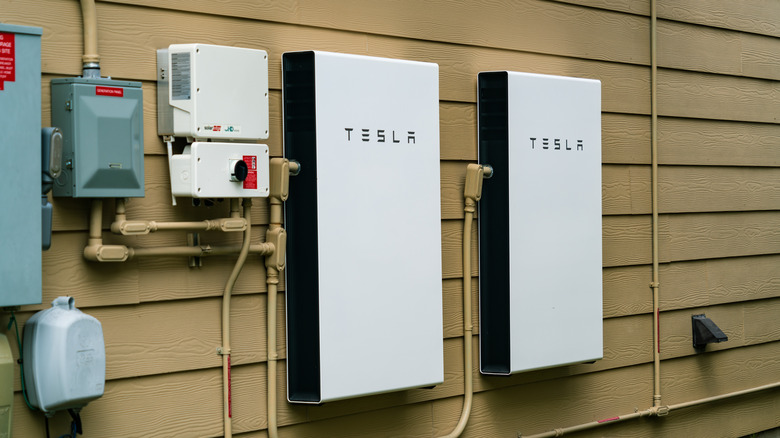
Roschetzkyistockphoto/Getty Images
As well as simply being able to generate power, many homeowners prefer to install a battery for energy storage along with their panel array. This is sometimes referred to as «solar plus storage.» Many leading solar panel providers have their own preferred battery storage systems — for example, Tesla has the Powerwall. Adding storage gives homeowners the ability to continue using renewable energy even when the solar panels are not generating electricity, but can considerably increase the cost of installing a system. Powerwall, for example, costs more than $11,000 on top of the cost of installing solar panels.
There are plenty of alternative storage systems out there, some cheaper than Tesla. Whether or not storage is a worthwhile investment comes down to individual needs. A storage battery is a great way to ensure ultimate self-sufficiency and should be a worthwhile investment for homeowners who frequently suffer from power outages. However, it’s not essential for those installing solar on a tighter budget.
Are solar panels worth the cost?
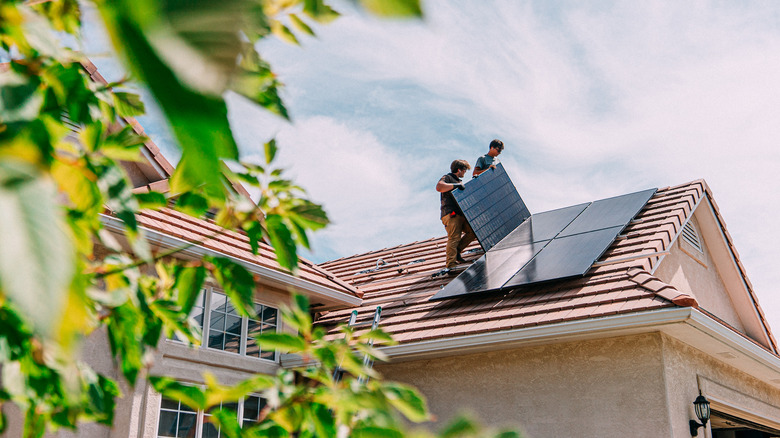
Jeremy Poland/Getty Images
While the initial setup costs for solar panels can be expensive, many households can expect to save money over the long term. Cell degradation was a common issue in some earlier solar panels, but modern solar panels should lose less than 1% of their efficiency each year. That means that, even 25 years down the line, they should continue to generate at least 80% of their original capacity.
Panels might no longer be a barrier to solar adoption, but soft costs can still prove prohibitive. Soft costs encompass everything from the cost of acquiring building permits to the margin for installation companies and will vary significantly between locations. Solar panels have decreased in cost so much in recent years that almost two-thirds of the total cost of installation now comprises soft costs. So, while solar panels are worth their cost in a standalone capacity, how worthwhile they are to actually install on any individual home still varies on a case-by-case basis.